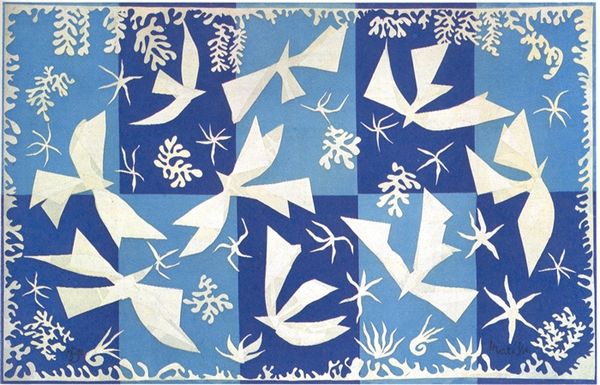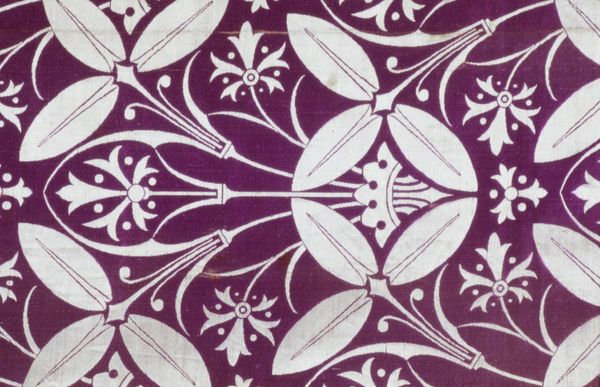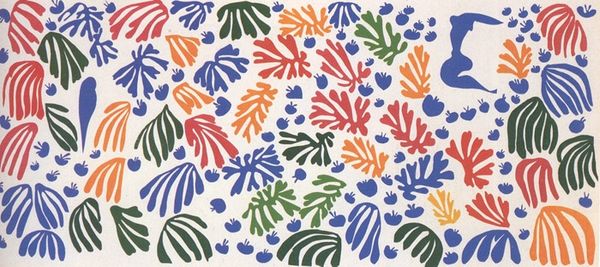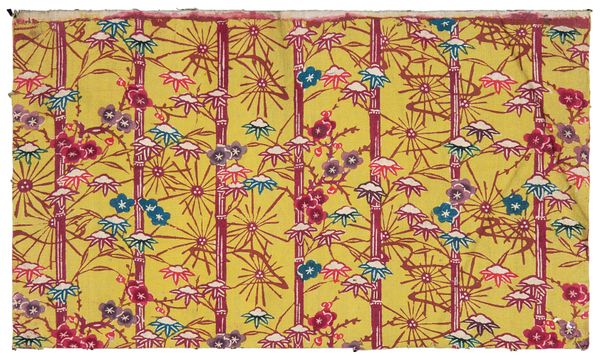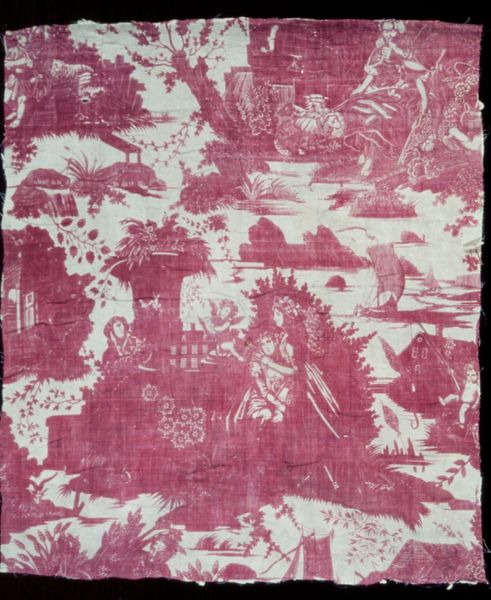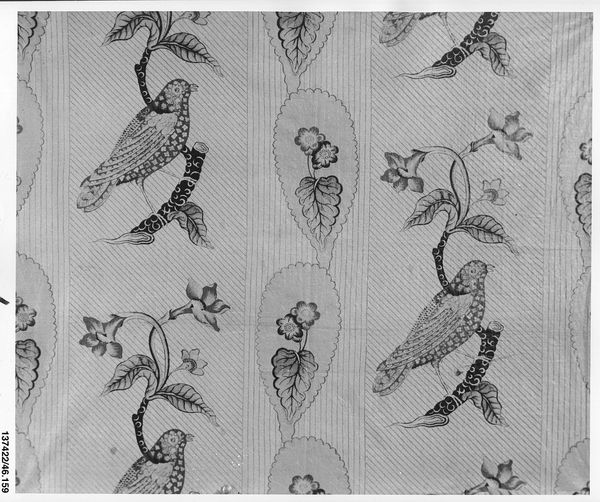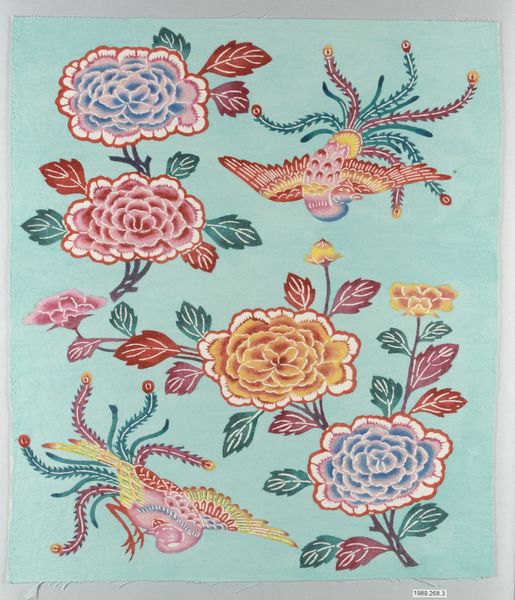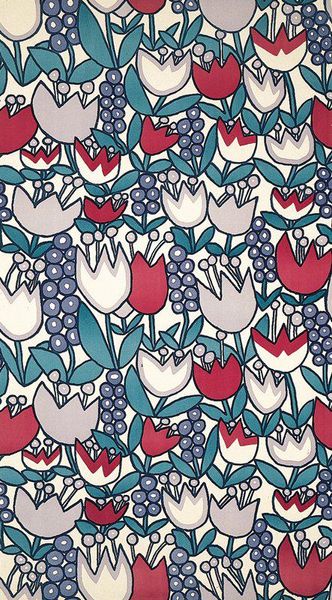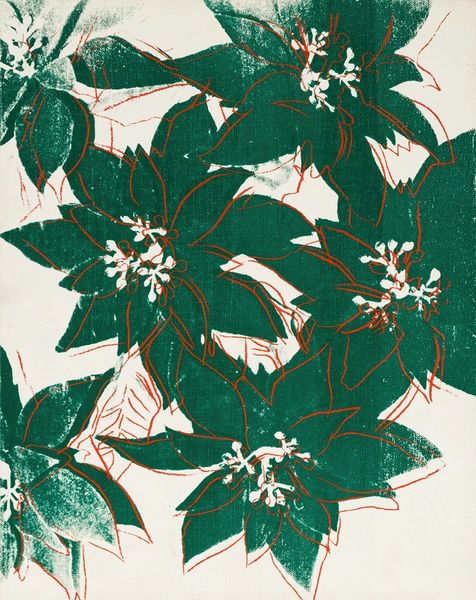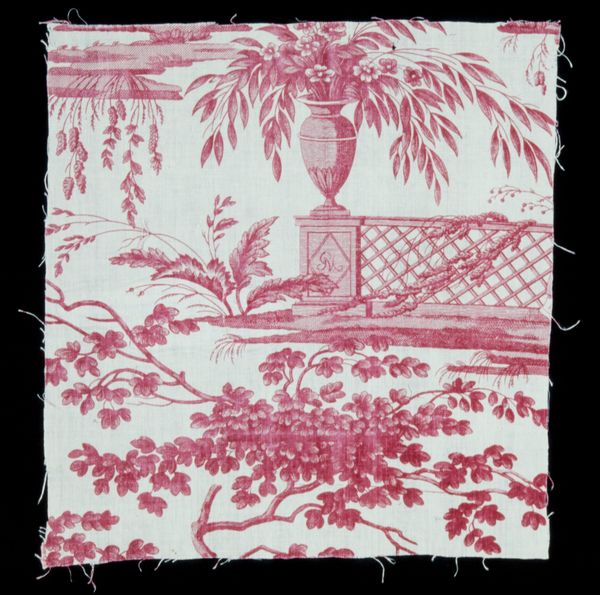
Copyright: Henri Matisse,Fair Use
Curator: Looking at this vibrant collage, "Polynesia, La Mer" from 1946 by Henri Matisse, it feels like diving into a warm ocean on a bright summer day. Editor: Yes! It strikes me immediately as incredibly optimistic, even childlike, with its flat shapes and bold colors. The composition is both playful and incredibly sophisticated in its arrangement. Curator: Absolutely. Notice how Matisse employs the cutout technique—painted paper meticulously cut and arranged. The marine life—algae, coral, fish, and even the symbolic birds—become flattened symbols, floating on a bi-color chessboard-like background. This use of simplified forms reduces the natural world to a series of archetypes. Editor: And the repetition of these forms, combined with the contrast of the ultramarine and the plum-purple evokes a kind of rhythm that feels simultaneously serene and slightly unsettling. I'm interested in how this piece fits into the broader narrative of post-war art. In 1946, after enduring so much devastation, the creation of joyful pieces such as this takes on a new kind of defiant resonance, doesn't it? Curator: I think you're spot on. The cultural context here is crucial. These simplified forms aren't just about visual appeal. Matisse, later in his career and physically limited, returned to an art form resembling practices from his childhood and infancy—it almost suggests that he's revisiting his own foundations through universal forms and structures. Editor: I also think there's a really potent exploration here around the concept of paradise and escape. Even the title pulls you in—Polynesia conjuring very specific images rooted in colonialism. Matisse isn't replicating those representations necessarily, but maybe examining our collective longing for those idealized places, while acknowledging they’re deeply intertwined with colonial realities. Curator: That’s a powerful observation. It acknowledges the layers of projection and desire inherent in such imagery, imbuing these seemingly simple shapes with much more weight and psychological depth. Editor: Yes, seeing it within that critical lens is important because it resists reducing Matisse’s piece to a simple visual pleasure and helps to underscore its subtle complexity. Curator: Indeed. "Polynesia, La Mer" manages to be decorative, deeply symbolic, and historically engaged all at once. It reveals that simple images can indeed contain entire worlds, not just of beauty, but also of meaning. Editor: Exactly. And seeing the beauty in this tension and complexity helps us acknowledge how many conversations—personal, cultural, historical, artistic—this artwork prompts.
Comments
No comments
Be the first to comment and join the conversation on the ultimate creative platform.
